Best practices (buildings)
Contents
- 1 Introduction
- 2 List of best practices
- 2.1 Energy management system in the city of Ferrara
- 2.2 Energy management system in the city of Weiz
- 2.3 Collaboration between SIPRO, Dedagroup, Municipality of Ferrara and ELISE Action project
- 2.4 Complementary activities of CitiEnGov and mySMARTLife project
- 2.5 Collaboration between CitiEnGov project partner and CityGML Energy ADE
- 2.6 Gemini house
- 2.7 W.E.I.Z., First Passive House Office Building of Central Europe
- 2.8 Renovation of municipal buildings in the Municipality of Brda
- 2.9 Implementation of energy management system in Kindergarten Divaca
- 2.10 Zero energy building of “Intercompany Training Center” Nova Gorica
- 2.11 Renewable Energy Park
- 2.12 Health centre Kranj - weather-forecast controlled heating
- 2.13 Senior citizens home Trebnje - Indoor temperature regulation system
- 2.14 Energy Performance Certificates Open Data - Regione Lombardia
- 2.15 ARPAE RES H/C Spread
- 3 Conclusions
- 4 Conclusions
Introduction
The best practices serve as a showcase of good examples and should be a first step to acknowledgment of new solutions. The section includes solutions and best practices that are in line of the Toolkit focus and were implemented in the building sector.
Best practices are comprised of the following resources:
- best practices that were collected from project partners, who identified them basing upon their experience they had from their region (project deliverable D.T1.1.1).
- best practices that are actually implemented by CitiEnGov Project partners and were collected during study visits in CitiEnGov regions.
- accomplishments that arrived from synergies of CitiEnGov project partners and existing European initiatives, projects and platforms that have a focus on renewable energy sources and energy efficiency.
List of best practices
Energy management system in the city of Ferrara
Location
Municipality of Ferrara, Italy
Description
Municipality of Ferrara showed the use of data at municipal level for implementation of energy strategies. The importance of energy data is linked to urban planning and environment, especially to specific actions, from refurbishment of public buildings to planning and monitoring activities. Collected energy data and software can used to match planning needs and public administration processes, enabling a better energy performance in a medium/long-term period. The images show collection and harmonization of data at local level. Collection of energy data in buildings and spatial information like shape, height, number of units, volume, age, type, energy consumption, heating system types.
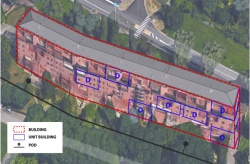
|
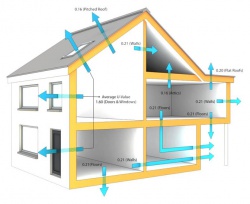
|
Link and contacts
http://rubrica.comune.fe.it/front_office/office_view/2
Energy management system in the city of Weiz
Location
City of Weiz, Austria
Description
Working consequently on energy issues and having energy data at municipal level is what Weiz has set up to do. The city of Weiz has decided to work with real data based on the size of the city of having about 11.300 inhabitants and about 450 energy supplied buildings. Having a good energy data basis is a result of (1) a survey of private households in the year 2013-2014, (2) the adjustment of this field research with existing data in the municipality and (3) the adjustment with statistics. The main challenge regarding energy management are (1) keeping the level of data quality (actualizing the data), (2) harmonizing them with existing data of the municipality (different tools and data basis) and (3) identifying/developing the “right” tool that could include future issues.
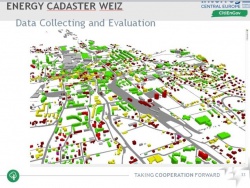
|
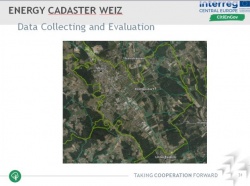
|
Link and contacts
Collaboration between SIPRO, Dedagroup, Municipality of Ferrara and ELISE Action project
Location
Municipality of Ferrara, Italy
Description
The ELISE Action is a package of legal/policy, organisational, semantic and technical interoperability solutions to facilitate efficient and effective electronic cross-border or cross-sector interaction between European public administrations and between them and citizens and businesses. The collaboration between CitiEnGov project partners and ELISE Action will address issues on energy data and undertake activities related to collection of energy data. In this context, the Municipality of Ferrara ( who is associated partner in CitiEnGov) together with the project lead partner SIPRO and supported by Dedagroup will collect spatial and energy-related data that is of interest for the ELISE energy pilot, in particular for the Use Case 2 (Implementation of different buildings’ Energy Performance Labelling schemes), aiming at developing different geo-processing services to automatically calculate the “energy labels” of buildings based on spatial information and basic attributes such as volumes and surfaces.
Link and contacts
http://inspire-sandbox.jrc.ec.europa.eu/energy-pilot/use-case-1/webapp/
Complementary activities of CitiEnGov and mySMARTLife project
Location
City of Bydgoszcz, Poland
Description
The implementation of the CitiEnGov project is complementary to the activities that the City of Bydgoszcz is performing in the mySMARTLife project. mySMARTLife is a project funded under the European Union’s Horizon 2020 research and innovation programme. Activities will take place in the three lighthouse/advanced cities, where they will implement integrated, smart solutions in 3 areas: energy in buildings, transportation and CT. One of the results of the CitiEnGov project, which aims at energy data harmonization, is an energy database. This database will provide data on energy consumption (electricity, central heating, gas and water) of municipal public buildings (e.g. schools, municipality offices). This might be used for Replication of Advanced Integrated Urban Planning methodology, for example:
- where an energy model (demand and supply) will be identified to create a 3D modelling,
- for simulations of energy demand for the next 10 – 20 years.
Link and contacts
http://www.mysmartlife.eu/mysmartlife/
Collaboration between CitiEnGov project partner and CityGML Energy ADE
Description
CityGML is an open standardized data model and exchange format to store digital 3D models of cities and landscapes. It is implemented as an application scheme for GML3, and it is an official international standard of the OGC. The CityGML Energy ADE aims at extending the CityGML 2.0 standard with energy-related entities and attributes necessary to perform energy analyses at urban scale, such as energy demand diagnostics, solar potential study, simulation of low-carbon energy strategies etc. Its structure is conceived to be modular, so as to be potentially used and extended also for other applications (e.g. module Occupancy for socio-economics, module Construction and Materials for acoustics or statics, etc). The collaboration, between Dedagroup of CitiEnGov project and Energy ADE working group, is focused on data infrastructures for energy data.
Link and contacts
http://en.wiki.energy.sig3d.org/index.php/Workshop_Ferrara_2016
Gemini house
Location
City of Weiz, Austria
Description
The idea for the Gemini House comes from the Austrian programmer Roland Mösl. He presented 1993 the vision of a house that rotates with the sun on the Innovation Fair “Eureca” and won with it the gold medal. 2001 after years of planning the Gemini House was built within 7 months. The basic idea was to develop a detached one-family house being as sustainable as possible in view of the global environmental situation. The following criteria should be taken into consideration when designing it: No consumption of non-renewable energy, the house should be as independent as possible from the power grid, state of the art building technique and a small space consumption. To achieve a maximum of energy output the following equipment components were used: 40 m² window area to make use of passive solar radiation, 70 m² photovoltaic cells mounted on the roof for generating electricity, excellent thermal insulation in the walls, passive house heating system by using a heat pump, computerised energy monitoring system. The main building material used is wood, because it represents a regional sustainable material that is abundant in the surroundings of Weiz. The Gemini House produces by the active and passive use of solar energy, more energy than it consumes and is a Plus-Energy-House.
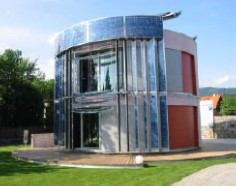
|
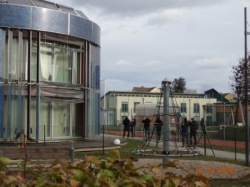
|
Link and contacts
http://www.weiz.at/umwelt/projekte/geminihaus
W.E.I.Z., First Passive House Office Building of Central Europe
Location
City of Weiz, Austria
Description
The innovative focus of the building is supported by its architecture, construction and energy concept. The W.E.I.Z. 1 is a compact 3-storey office building that consists of two elements: the offices and the atrium. The atrium hall is the communication area of the building where the lift, the stairs, the corridors, the conference- and meeting rooms and kitchens are arranged. The hygienic air renewal, which is necessary for the offices (avoidance of uncontrolled ventilation, tightness of the building) serves as heating and cooling at the same time. The preheating of the air takes place in the earth register, the after-heating takes place in the cross-air-to-air-heat-exchanger. The heated air is introduced to the offices through air diffusers. The consumed air is introduced through excess-current-grills from the offices to the atrium, which is heated with the consumed air. This outgoing air is centrally collected and on the other hand, heats the inlet air in the cross-air-to-air-heat-exchanger. The same system is used in the summer to cool the building.
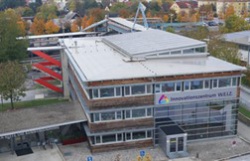
|
Link and contacts
http://www.innovationszentrum-weiz.at
Renovation of municipal buildings in the Municipality of Brda
Location
Goriška region, Municipality of Brda, Slovenia
Description
For the purposes of the energy-efficient refurbishment of three public buildings the Municipality of Brda received funding from the Cohesion Fund and from the program Swiss contribution for Dobrovo Elementary School and Kindergarten and Kojsko Elementary School and Kindergarten. For the comprehensive energy rehabilitation of municipal building there was no possiblity to obtain non-refundable grants. The municipality decided to carry out the renovation of all three buildings following the principle of contractual assurance of savings (EPC - Energy Performance Contracting) through energy service companies (ESCOs - Energy Service Company) selected on the basis of award procedures of the contract in accordance with the applicable legislation in this area. The concession contract is concluded for a period of 15 years.
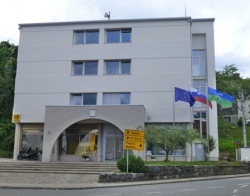
|
Link and contacts
http://www.obcina-brda.si/obcina_brda/projekti_in_nalozbe/zakljuceni/
Implementation of energy management system in Kindergarten Divaca
Location
Goirška region, Municipality of Divaca, Slovenia
Description
Within a new building of Kindergarten Divaca an energy monitoring and targeting has been introduced. Within a first phase, energy data monitoring was based on energy invoices and invoices of water consumption. In the later phase, the monitoring was upgraded with the installation of meters of heat consumption and remote data reading. This allows energy managers to follow the energy targets. Establishment of excellent cooperation between municipal administration and local energy agency as their energy manager enabled prompt and efficient intervention for eliminating errors in energy use (for example: identification of inappropriate heat pump operation, reduction of excessed water use from automatic irrigation).
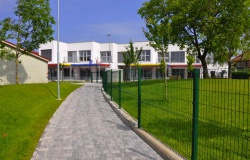
|
Link and contacts
http://mycovenant.eumayors.eu/docs/seap/5606_1393506625.pdf
Zero energy building of “Intercompany Training Center” Nova Gorica
Location
Nova Gorica, Slovenia
Description
The education centre is zero-energy building with innovative system of construction, heating and cooling. The building has an active protection envelope, with tubes embedded in the horizontal and vertical construction systems of the building. This keeps the building warmer in the winter and cools it down in the summer. There are also solar panels installed on the roof, which power boilers in the basement of the building. The boilers all have counters to collect the consumption of energy.
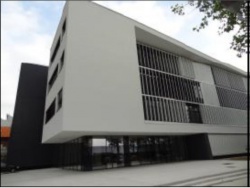
|
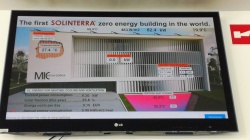
|
Renewable Energy Park
Location
Debrecen, Hungary
Description
Private company in strong co-operation with the University of Debrecen as state public body. Beside its economic activity, the Renewable Energy Park in Debrecen serves as a scientific, education and demonstration park to promote the widespread use of renewable energy sources and actively contributes to make Debrecen a well-known innovation centre. Co-operating with the University of Debrecen, the park is used as the centre of numerous research projects in the filed of energy and meteorology. The established solar, wind, PV systems are available online for researchers.
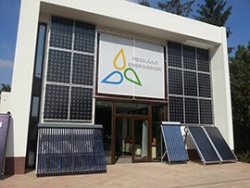
|
Link and contacts
http://www.megujuloenergiapark.hu/
Health centre Kranj - weather-forecast controlled heating
Location
Kranj, Slovenia
Description
The service eGain forecasting™ provides the system for weather-forecast controlled heating. It optimises the heating in the building on the basis of a professional and detailed weather forecast that includes temperature, precipitation, wind direction and speed, sun radiation, angle and reflection. The system receives weather forecasts via the mobile network (GSM/3G) and is connected directly to the existing heating system. The forecast receiver produces a temperature equivalent (Teq), which replaces the traditional outdoor temperature as the heating system’s guide. Graphic tool gives customers and energy consultants the opportunity to work with energy data and to influence the calculation of the energy balance for each building. Self-learning optimisation of the energy-balance calculations is now being applied in the system so that energy-balance calculation is continuously improved each day during the heating season.
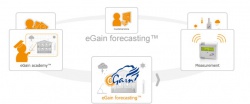
|
Link and contacts
Senior citizens home Trebnje - Indoor temperature regulation system
Location
Trebnje, Slovenia
Description
Zonal heat control system in Nursing home Trebnje was installed in 2014. The system enables regulation of temperature in individual areas inside the building. In addition, there are sensors installed on the windows that can detect when the window is open. In the case of opened/closed window the sensor sends the signal to the electronic thermostatic valve to switch off/on. The system is operated within the web application that supports real-time data (valve opening, temperature, window opening). Battery-powered sensors and thermostatic valves communicate with a wireless control system. System enables the user to regulate temperature within his working place, therefore individual user’s needs are meet.
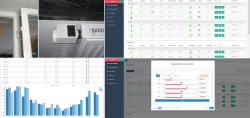
|
Link and contacts
Energy Performance Certificates Open Data - Regione Lombardia
Location
Region Lombardia, Italy
Description
The open data portal of Regione Lombardia contains free and open government data. One of the datasets available is the "Energy Performance of Buildings" (EPC), with hundreds of thousands of records at building unit level, with information about use of the unit (e.g. residential), cadastral id, address, reasons for the EPC, heated volumes, energy class, energy performance for heating (kwh/sqm*a), CO2 emissions, type of fuel. The availability of this dataset is very important as it represents an interesting source for geographic analysis.
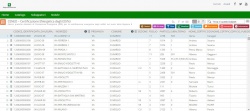
|
Link and contacts
https://www.dati.lombardia.it/Energia/CENED-Certificazione-ENergetica-degli-EDifici/rsg3-xhvk
ARPAE RES H/C Spread
Location
Regions: Castilla y Leon (Spain), Emilia Romagna (Italy), Riga (Latvia), Rhodope (Bulgaria), Western Macedonia (Greece) and Salzburg (Austria)
Description
Running from 2014 to 2016, the RES H/C SPREAD project has developed six regional pilot plans in the field of heating and cooling with renewable energies, in order to harmonize baselines and therefore allow better policy planning. The project involves six pilot regions (Castilla y Leon in Spain, Emilia Romagna in Italy, Salzburg in Austria, Riga in Latvia, Western Macedonia in Greece and Rhodope in Bulgaria) representing the main climatic zones in Europe, primarily in the Mediterranean area. These pilot regions have benefitted from procedural and methodological support in developing their own plans for the optimal use of renewable energy for heating and cooling. Special attention has been devoted to improving participatory governance, enabling the collaboration of regional and national stakeholders. In each region, the project has established Country Governance Committees to support the plans’ implementation and to help regional authorities, key stakeholders and citizen representatives reach consensus. The plans have been developed in accordance with the regional demand for heating and cooling and with Energy Efficiency Directive (EED) requirements: “to optimize the utilization of locally available residual and waste sources of heat, cooling and RES through the use of district heating & cooling networks in areas of sufficient heat and cooling demand.” In the long term, it is hoped that the project’s outputs will support the establishment of regional plans in additional areas, by providing an example of best practices for guidance, procedures and planning methods.
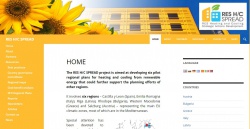
|
Link and contacts
https://www.arpae.it/dettaglio_generale.asp?id=3461&idlivello=1940
Conclusions
xxxxxxxx
Conclusions
aaaa